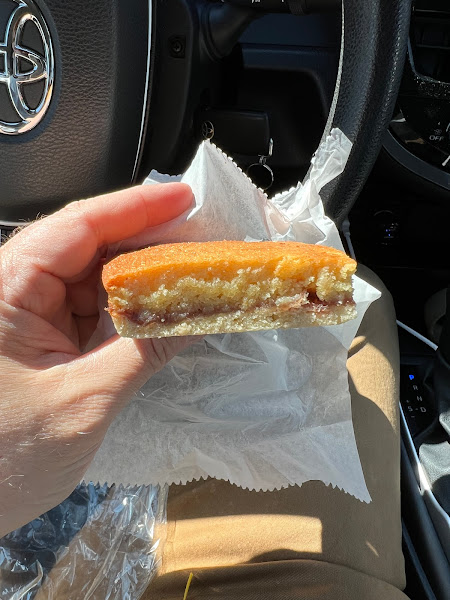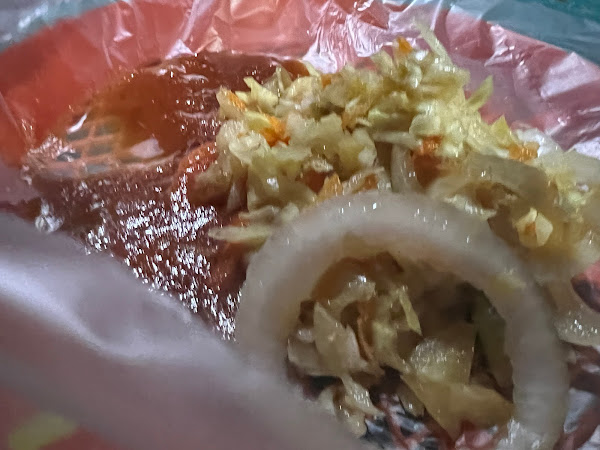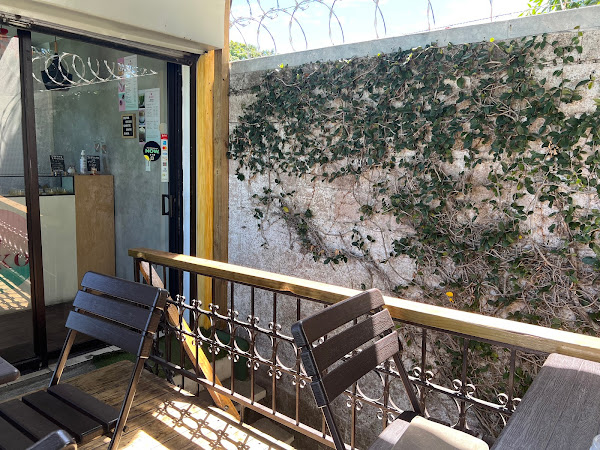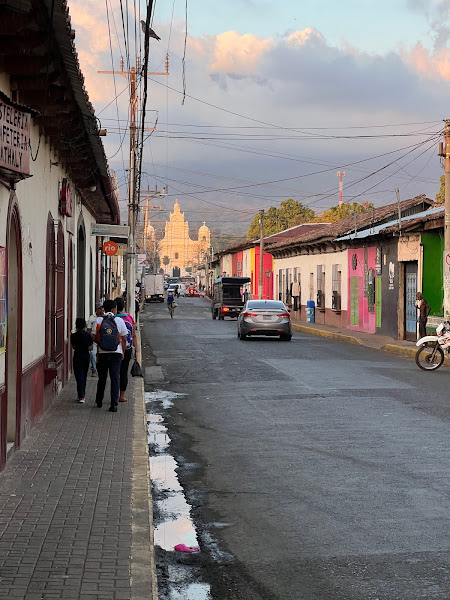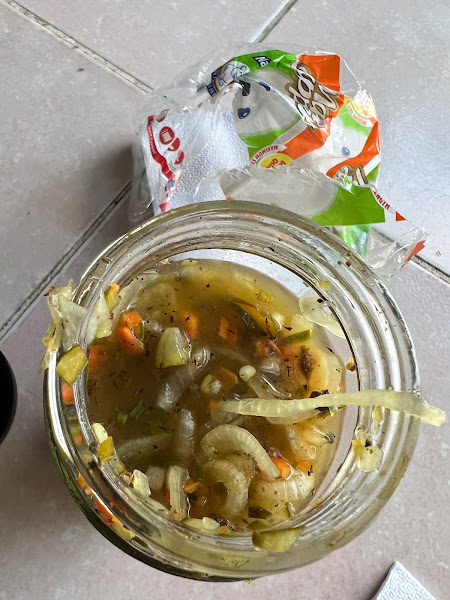El Salvador Day 1: Strong Start with Grandma Rice Pupusas
El Salvador Day 2: Típicos
El Salvador Day 3: Quesadilla and the Death of Enlightenment
El Salvador Day 4: (Part1) Izalco Bound
"Places" are like "dishes". These are abstract two-dimensional labels affixed, ridiculously, to organic three-dimensional things. The discrepancy becomes more apparent when you get away from the bustle. And as my creaky Third World highway gave way to a rural route, funneled into a potholed one-laner, and finally collapsed into dirt increasingly undistinguishable from the rest of the countryside, obliviously crossed by broods of haughty poultry and packs of feral dogs, I was very much "away from the bustle".
That's why, despite its legend, and its presence on Salvadoran "best-of" lists, and its Google "place" entry, there
is no
Sopa de Gallina Caluco. It's not a restaurant name. It's the name of a common soup followed by the name of a tiny village. So if you're foolish enough to blow into town [sic] asking "Where is 'Sopa de Gallina Caluco'?", you will draw befuddled laughter. As I did.
It's like driving into Brooklyn and asking your first local "My good sir, might you direct me to an establishment by the name of Brooklyn Pizza?" Except it's worse than that, because Brooklyn actually
has establishments, while Caluco has - besides the resident
Calucoños (sí, lo sé) - a river, populations of feral dogs, strutting hens, plus the familiar compliment of trees, rocks, turds, and wind. And that's it. There's no 7-11. There's no post office. And "Sopa de Gallina Caluco," such as it is, appears to be some lady - or shifting slate of ladies - who may or may not choose to neglect her housework long enough to give your gringo ass some soup.
"Sopa de Gallina Caluco" is a hoax. It's like following your GPS to something called "Jim's Pancakes" and knocking on my door, demanding flapjacks. "Uh, Hi! Uh, geez, I wasn't really making pancakes right now, and this isn't actually a restaurant, and I don't totally understand what you're doing here, but, uh....."
There was an emergency conference of the citizenry where it was decided that I would be obliged.
I was guided by a six year old clutching a soccer ball into a riverside concrete bunker and seated at a bare table impressively populated by ants performing many important tasks. And finally I was asked whether I wanted "the whole meal", and I supplied the standard chowhound's reply, derived from improvisatory theater:
"Yes and." Then I waited there a good long while, just me and the ants.
I had time to meditate on the essential question: Whence hen?
Pollo and
gallina. Chicken and hen. I'm perennially foggy on the difference, even though every decade or so it gets pounded back into my awareness, and then, from sheer disuse (I don't get a whole lot of hen), any lingering hen acquaintanceship is buried anew in brain silt. I thought I remembered hen as being tough (but worth it!), but otherwise I'd been using the terms interchangeably.
But no more. My hen memory can never again sink into brain silt.
The "whole meal" is a two parter: Hen soup...and then the hen. There's a Pete Barbutti Vegas lounge joke in there somewhere, but I won't reach for it.
Best curtido of my life:
The soup was supernal:
And the hen was...well, just look at it.
Try not to click that last photo. It would expand your view of that wondrous cheese, quite possibly making you cry. I teared up a little, but don't think anyone saw. This was the humblest and best fresh cheese I've ever eaten. Way less characterful than the brilliant stuff served at
"A Casa do Jorge", south of Lisbon, but sometimes less is more.
I asked whether the cheese was made in the village. Once again, befuddled laughter. Nahh, dude. Nahh, we have the cheese flown in daily from Nicaragua on the town chopper, because we villagers are too busy incubating social media startups to flip over to VCs for a third round exit (five-banger
minimum, dude). See all that vegetation? It's AR. Nahhhhhh, dude, no time for messing around with cheese here. Oh, hold on just a sec, dude; I need to bring my kid down to the river so he can shit.
Yeah, I ask the best questions.
Oh, and hen is tough. It's like chicken for bigger, stronger, better people. Decathlon champs and so forth. But worth it.
I know I haven't been offering much in the way of specific flavor description in these reports. Salvadoran is not a subtle cuisine, packed with surprises. Things taste like they look, so I let the photos carry the message. I'm also assuming you've all tried Salvadoran food in immigrant restaurants.
And if there are revelations, I'll try to rise to the descriptive occasion. But this simple fare was all unshowy tens (on my surprisingly un-ditzy system of rating foods from one to ten). Not because, like, some perfectly nuance hint of tarragon was just boffo. It's more modest magic. Perfect catnip for a devotee of nano aesthetics.
I paid pretty-much-nothing and drove on. Everyone was friendly enough, but life in remote villages is tough and they had stuff to do, and I did not fit comfortably into their movie.
Ancient Yuca Artifact
Minimal research on this one. A local food maven had sternly directed me to drive for hours to try yuca, wrapped in a fluorescent green banana leaf, at a certain place (
Yuqueria de Penjamo) in Izalco, and I took it on faith, flying blind into Izalco.
Sometimes I'm oddly submissive in my chowhounding; willing to make myself driftwood and be carried by the waves. I've learned to cultivate passivity to draw in serendipity; to conjure something from nothing. See my posting
"Creating a Vacuum to Leech Out Eurekas".
Yuqueria de Penjamo is hidden on a residential block of Izalco, where the yucateers combine ingredients from a panoply of white plastic buckets from a sunken courtyard far beneath a broken sidewalk. They wrap
yuca salcochada (stewed) or
yuca frita (fried) in enormous, fluorescent green yuca leaves, and you don't need a degree in gastro-archeology to recognize that this is pre-Colombian. You are traveling back in time.
I could feel in my bones that this is a dying art form, which, a few years from now, will be a distant memory. It has the feel of being impossibly out of its time - a feeling which leaves me immensely grateful. It's like having found the great jazz drummer Walter "Baby Sweets" Perkins, a hero of mine, playing in a little club near the airport at the relatively late date of 1987, and befriending him, and playing with him a lot, and taking him to Spain to play some more. Why am I so lucky? Why me?
I like fried yuca, but you can't beat the silkiness and subtle flavor of stewed, so that's what I asked for. Myriad things (including
curtido, natch) are mixed in, plus your meat of choice:
lengua (tongue),
cachete (cheek),
hígado (liver),
corazón (heart), or
patitas de cerdo (pig trotters). They run out of trotters early, so I opted for cachete.
I'm a bit hazy on this. The yuca also comes with
chicharrones (pork skin), and I think that's what I'm displaying in the photo. So either the
cachete never happened (and I'd missed this in the vendor's rapid-fire Spanish), or it was so tender that it was lost amid the ecstatic slimy swirls. Not sure. I was, by that point, in a drifty altered state, just barely able to click my camera button, much less probe around.
Ok, here we go:
Once again I'm left with chowmnesia. I have very little recollection, but am experienced enough to understand why. When food passes a certain threshold, your brain turns off. You can't characterize. No adjectives or metaphors arise. You are simply captivated; galvanized. You can't frame it as anything but your all-consuming immediate universe. The camera lens gets stuck. There is no editorial space.
This had happened on Day One with the rice
pupusas, Day Three with the hot/fresh
quesadilla, and earlier today with the potatoes in Mercadito de Merliot. At a "9" or above, I once
wrote,
"Rational thought breaks down. You don't analyze, you just want to keep enjoying, blocking out all distraction.
Here's a nice article about Yuquería de Pénjamo (note that the area boasts other yuca vendors, though I do suspect that the hourglass sands are running out), and they're open Tues, Thurs, and Saturday after 2pm, and the price is whatever the hell they want to charge (it'd be worth it), or $3, whichever's lower. Click the link for a look at the whole yuca leaf package, which, in my tunnel vision, I forgot to photograph.
One final note persists. I deliberately rammed it in my memory banks at great personal expense, knowing it would be damnably hard to retrieve data in the aftermath of the total system crash caused by the yuca. Even so, I've stared at my screen for nigh unto 10 minutes, patiently waiting for the memory to recompose itself.
Ok. Got it.
It was vitally important for me to remember to tell you that you can eat the strings. Those weird, zany strings. The yuca strings. When yuca's really really super-good, and really really super right, like it was 2000 years ago, you eat the strings.
This is forgotten knowledge. I beg you: tell your children so it's not completely lost. The strings? You can eat them. When it's right. Only when it's so, so right. This is how we heal as a species.
Having performed my vital Earthly duty, I can now peacefully expire.
Staggering Aftermath
I do not understand Izalco. I drove up the hill into what I thought would be the town center, but it looked like a village even though I know this to be a major city. And as you stray onto some dull side street to park, or walk around, you might turn a corner and suddenly behold an unexpected 200 mile panoramic view across El Salvador's plains and across to multiple mountain ranges, because that seemingly modest rise to the town center somehow quietly hoisted you up the slope of an enormous volcano. In the wash of my yuca, I couldn't figure it all out. It's all dream logic. I drifted around the town square in a stupor. Almost got hit by a couple cars. Then somehow managed to find my car and get home.
What happened?
Remember my tale of the Medusa Gruel in Oaxaca, Mexico?
See the next installment
















